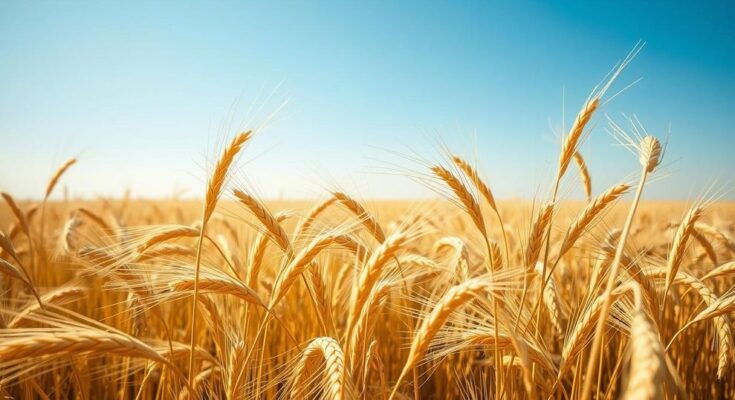Bank Al-Maghrib projects a modest increase in Morocco’s grain harvest to 35 million quintals, below government expectations of 70 million. The agricultural sector’s added value could rise by 2.5% due to this harvest. Recent heavy rainfall provides farmers with temporary hope, but experts warn it does not solve the long-term water crisis affecting the country.
Morocco’s central bank, Bank Al-Maghrib (BAM), anticipates a slight increase in the nation’s grain harvest for the current year, although this yield is projected to fall short of government expectations. During a press conference, Governor Abdellatif Jouahri stated that the harvest is expected to reach 35 million quintals, an improvement from 31.2 million quintals last year but well below the 55.1 million quintals achieved in 2022-2023.
BAM also forecasts a 2.5% increase in the added value of the agricultural sector this year, attributing this growth to the expected rise in grain and non-grain agricultural production. However, earlier projections made in December estimated a harvest of 50 million quintals, contingent on favorable rainfall during the critical December to March period. Without well-distributed rain, this target remains unachievable.
The government has set an even higher aspiration, targeting a grain yield of 70 million quintals as per its finance law. Recently, Morocco has experienced significant rainfall and snowfall, resulting in a 35% filling rate for dam reservoirs, an improvement from 26% during the same time last year. Despite this boost, it still lags behind the 68% level noted in 2018.
The recent precipitation has lifted the spirits of farmers, particularly those cultivating autumn grains such as wheat and barley. Nonetheless, experts caution that while the rainfall offers respite, it does not resolve the ongoing water crisis facing Morocco. “Morocco has always been a country of drought. This is structural, not something new,” stated Mohammed-Said Karrouk, climatology professor at Hassan II University of Casablanca. He highlighted that the most significant rainfall was concentrated in northern regions, while the central and southern areas, suffering from severe drought, received comparatively less.
In conclusion, while Bank Al-Maghrib predicts a slight improvement in Morocco’s grain harvest, it remains significantly below government projections. Despite recent rainfall providing temporary relief, longer-term water scarcity issues persist, emphasizing the need for comprehensive water management strategies in the country. The contrast in rainfall distribution also raises concerns regarding the ongoing drought conditions in various regions.
Original Source: www.moroccoworldnews.com




